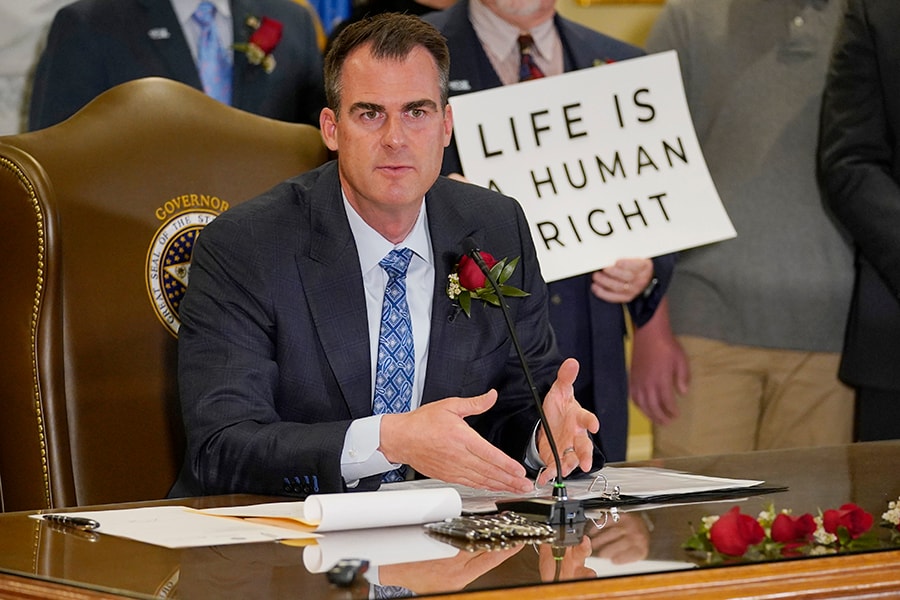
What's happening with abortion legislation in America's states
A law signed by Gov. Kevin Stitt of Oklahoma Tuesday makes it a felony, punishable by up to 10 years in prison, to perform an abortion in the state. It is the latest in a cascade of restrictive abortion legislation proposed in Republican-led states across the country
 Oklahoma Gov. Kevin Stitt speaks after signing into law a bill making it a felony to perform an abortion, punishable by up to 10 years in prison, Tuesday, April 12, 2022, in Oklahoma City.
Image: AP Photo/Sue Ogrocki
Oklahoma Gov. Kevin Stitt speaks after signing into law a bill making it a felony to perform an abortion, punishable by up to 10 years in prison, Tuesday, April 12, 2022, in Oklahoma City.
Image: AP Photo/Sue Ogrocki
A law signed by Gov. Kevin Stitt of Oklahoma Tuesday makes it a felony, punishable by up to 10 years in prison, to perform an abortion in the state. It is the latest in a cascade of restrictive abortion legislation proposed in Republican-led states across the country.
The measure, Senate Bill 612, which takes effect in August, allows for an exception only “to save the life of a pregnant woman in a medical emergency.”
The bill’s enactment comes after Oklahoma became a haven for Texans seeking abortions after Texas enacted a ban on most procedures last fall, the most far-reaching abortion restrictions to go into effect since the Supreme Court’s 1973 ruling in Roe v. Wade. It also comes as the Supreme Court prepares to rule this year on a case that could overturn Roe v. Wade.
Here are answers to some common questions about the legislation nationwide:
Which states have introduced legislation banning abortion?
Near-total abortion bans have been introduced in 30 states this year, according to the Guttmacher Institute, a research group that supports abortion rights. Bans have passed at least one legislative chamber in seven states: Arizona, Idaho, Wyoming, Florida, Kentucky, Oklahoma and West Virginia. They have been enacted in four of those states: Oklahoma, Arizona, Idaho, and Wyoming.
©2019 New York Times News Service




